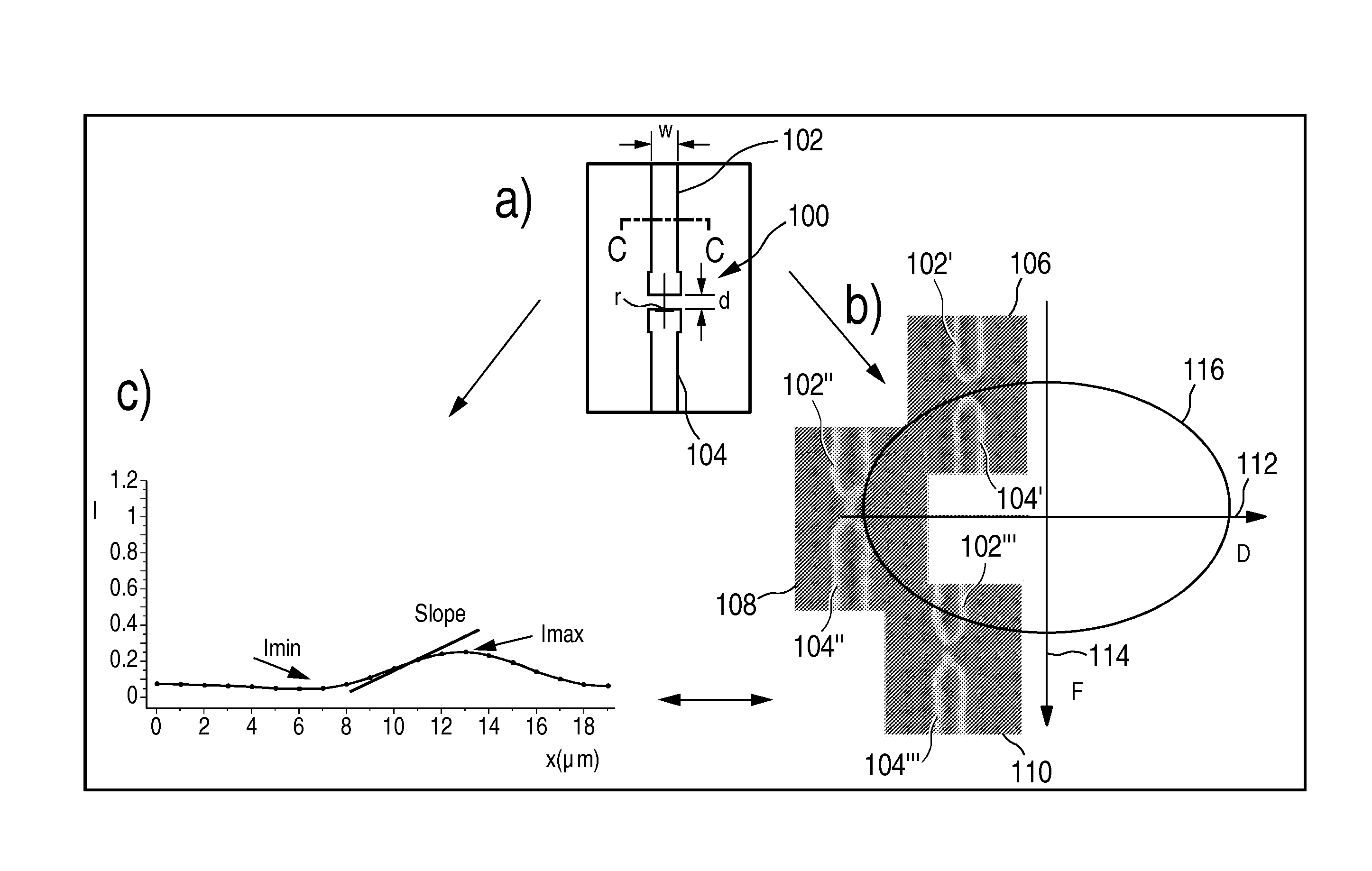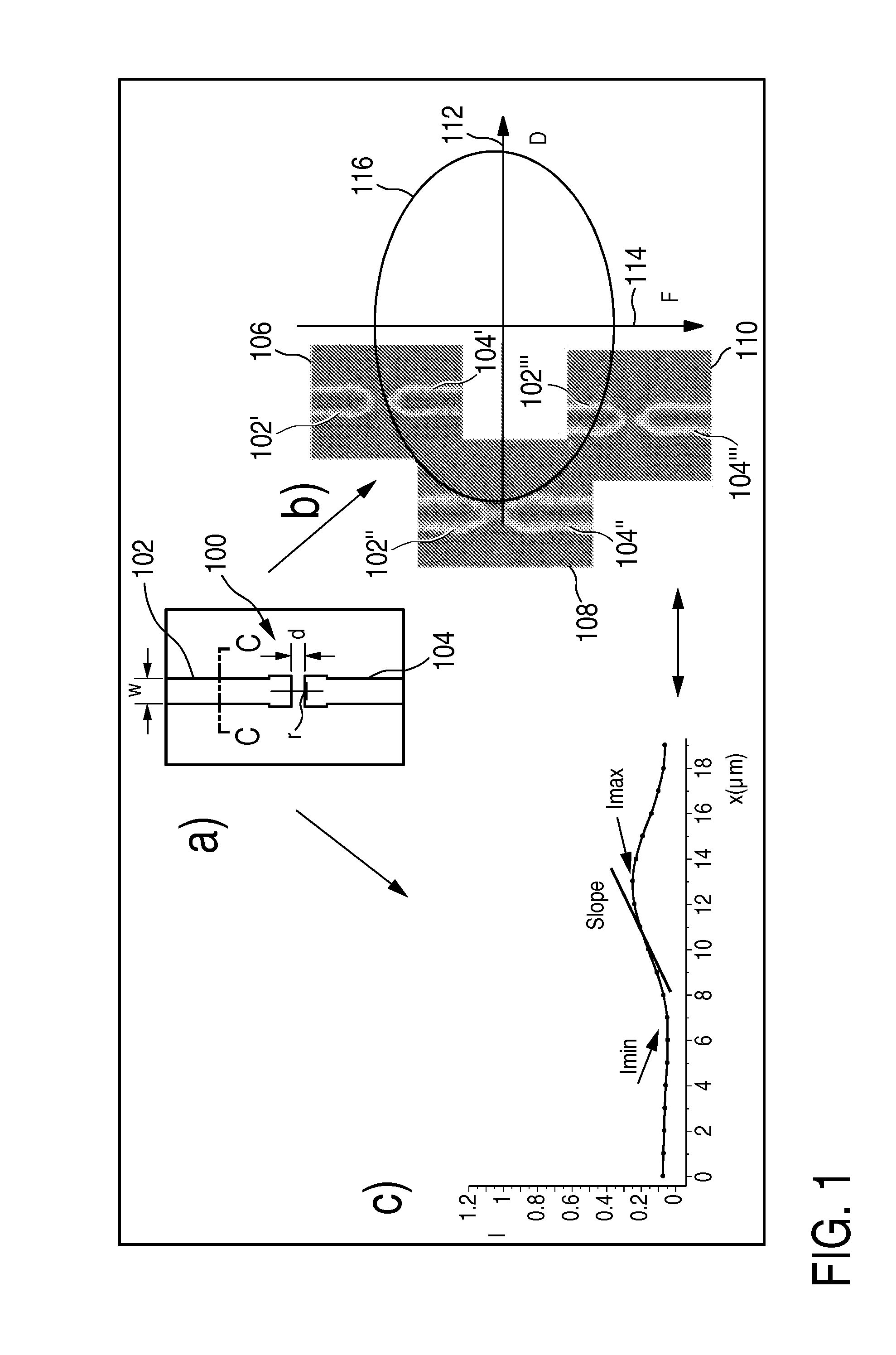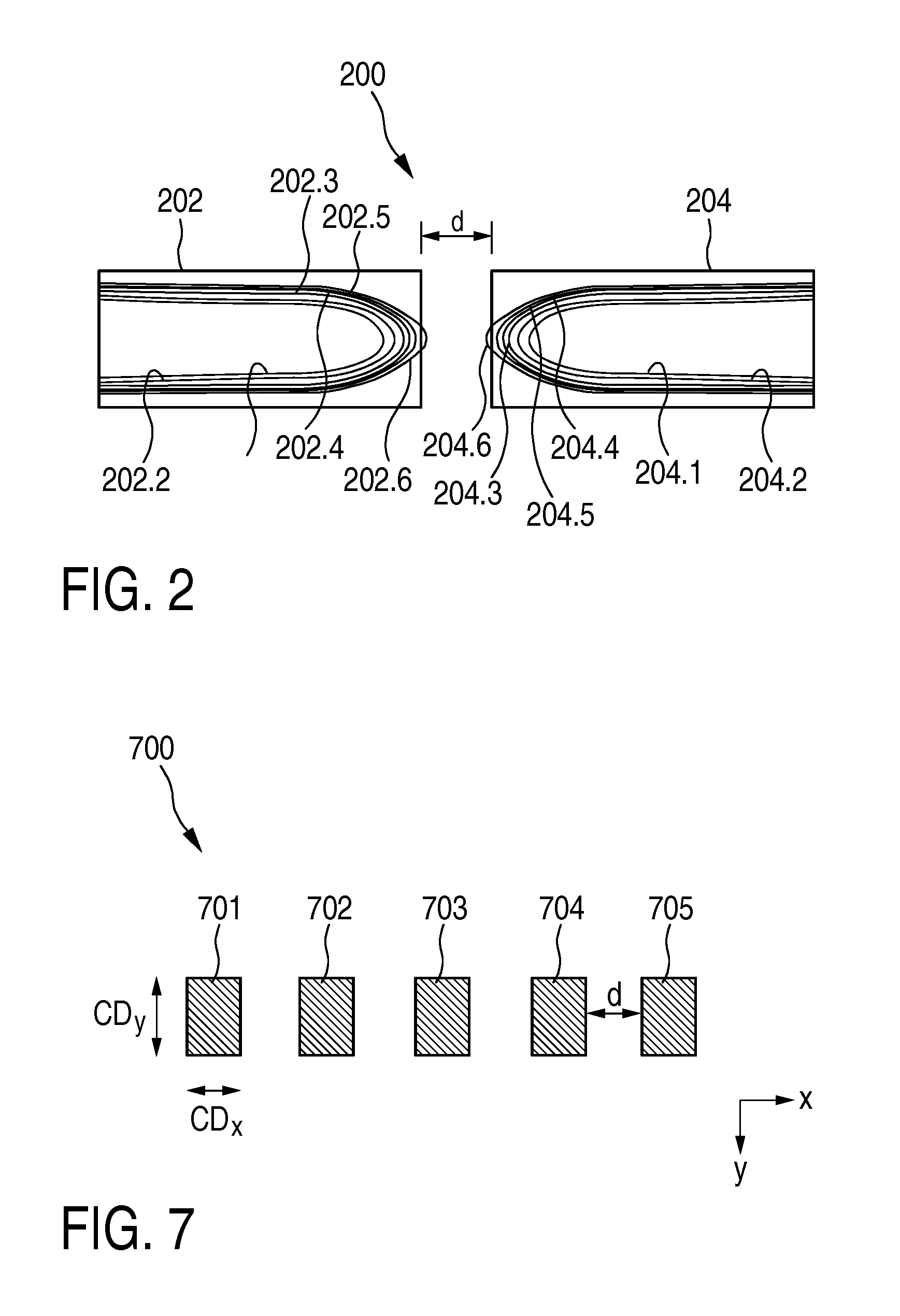Process-window aware detection and correction of lithographic printing issues at mask level
a technology of lithographic printing and masks, applied in error detection/correction, instruments, computing, etc., can solve problems such as critical failure models and undesired bridging, and achieve the effects of high precision, high accuracy, and easy handling
- Summary
- Abstract
- Description
- Claims
- Application Information
AI Technical Summary
Benefits of technology
Problems solved by technology
Method used
Image
Examples
Embodiment Construction
[0086]FIG. 1 shows an illustration of a critical feature in FIG. 1a), different prints of the critical feature at different respective process conditions within a process window in a schematic diagram in FIG. 1b), and an intensity contour along a line c-c in FIG. 1a) in a print of the critical feature, for illustration of an optical-parameter set. FIG. 1 serves to illustrate the technical context of the invention and certain terms used in the present application.
[0087]FIG. 1a) represents, by way of an illustrative example, a critical feature 100 in a physical layout of a print pattern. The critical feature in this example is formed by two line segments 102 and 104 of a material, for instance silicon, which are to be deposited on a substrate, for instance a silicon wafer by means of a photolithographic technique. Both line segments have a width w, which is slightly increased towards the respective line-segment end in comparison with other sections of the line segment. The line-segmen...
PUM
 Login to View More
Login to View More Abstract
Description
Claims
Application Information
 Login to View More
Login to View More - R&D
- Intellectual Property
- Life Sciences
- Materials
- Tech Scout
- Unparalleled Data Quality
- Higher Quality Content
- 60% Fewer Hallucinations
Browse by: Latest US Patents, China's latest patents, Technical Efficacy Thesaurus, Application Domain, Technology Topic, Popular Technical Reports.
© 2025 PatSnap. All rights reserved.Legal|Privacy policy|Modern Slavery Act Transparency Statement|Sitemap|About US| Contact US: help@patsnap.com



